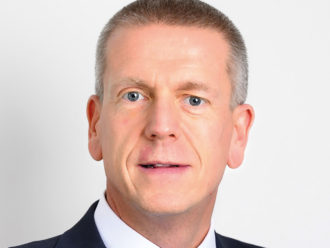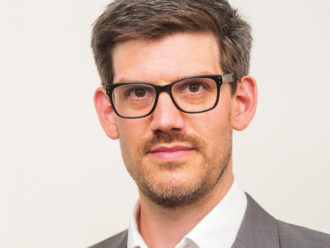Are there enough quality and liquid alternatives?
Well, I think there are a lot of renewable opportunities and this will obviously continue to grow. The world is starting to decarbonise but it won’t happen overnight; it’s going to take decades and decades. Oil and gas will be part of the energy picture for some time to come, as all of the new technologies, infrastructure and energy sources will develop over the next decades.
Are there times where it’s preferable to engage than to divest?
Oh, absolutely. Engagement has to be part of decarbonisation as well. Lots of our signatories at the moment are engaging with the big energy companies around the world about their scenario planning, what they’re doing about the 2-degree issue, what their transition plans are and how they are looking at moving their energy sources away from fossil fuels and into alternatives, etc. I think without engagement we wouldn’t see decarbonisation as they go hand-in-hand. We’ve also seen some of our signatories completely divest from pure play coal companies and you can understand that as well. But where a company is a multi-faceted organisation not deriving all of its profits from coal, then some of our signatories are still invested, so it’s a complex issue.
I read the Corporate Responsibility Review2016 report by Oekom Research which found there’s a lot of room for companies to improve. Does engagement really work?
Well, I think engagement does work. We do a lot of collaborative engagements at the PRI, so we have coalitions of investors who come together to work on issues. Usually it’s about getting better disclosure on an issue, because without disclosure and transparency investors don’t really know what companies are doing. After engagement we always measure whether we’ve had any success and while we don’t have success at every single company, we’re successful in the main. If we’re engaging with 40 companies, we’ll probably change prac-tices at 32 of them, for example. So I think engagement can work. But at the end of the day, if you’re engaging and engaging and a company is refusing to change, then you have to make a decision: what’s your next step? I don’t think engagement is the whole story, but I do think it works. It also de-pends on what you’re engaging on. There’s no use engaging with a tobacco company in order to change its product.
There are a lot of different approaches for implementing ESG criteria into a portfolio: exclusion, best in class, best of class, engagement, etc. What do you think is the best approach for an investor?
I don’t know that there’s necessarily a best in class. The integration of ESG factors across all of your investments is what the PRI tries to achieve, so integration is what we really look at. But our signatories also work in different regulatory environments; in some countries, the regulatory environment and laws mean you can’t invest in some sectors. So exclusion is part of what they do. And I think that’s a very valid issue as well. Best of class is obviously another. So you can say: “Well, we’ll invest in this particular sector, but we’re only going to invest in the companies that do certain things that are at the top of their field.” That hopefully encourages others in that sector to want to improve as well.
You said there are regional differences. Is that in the use of approaches?
Yes. In some of the Scandinavian countries you see more negative screening. For example, UN treaties about human rights are taken very seriously by investors who exclude companies that do not meet the UN treaties that have been signed. I’m from Australia where ESG integration is more the accepted way to go and you don’t see a lot of screening. In the US you can see more best of class, but I think it’s start-ing to move more to ESG integration. So there are definitely regional differences and that’s why I say there’s not a one-size-fitsall or a best way to approach it.
What was your motivation to join the UNPRI?
The pension association I previously worked for actually created another organisation to work on governance issues in particular, mainly working with Australian
companies. But I was always interested in ESG because I could see investors had an extremely large role to play in being able to influence these issues with companies. They are the owners of the companies at the end of the day. And as the pool of pension money around the world gets larger, that means pension funds own more and more of the stakes in companies. So that was one of the reasons for wanting to come and work with the PRI.
After the global financial crisis, I could also see that here we are trying to get people to put more and more money away into pensions, but it’s the market fundamentals letting investors down; look at how much money was wiped out. And that’s everyday mums and dads who are at home relying on their pension money to survive. So I wanted to do something that was about creating more sustainable financial markets.
Are asset owners scared about reporting?
Yes, I think people dislike the idea of reporting. But a lot of investors ask companies to be transparent and report, but then don’t want to do the same. I don’t think that is sustainable either; you have to walk the walk. Once they actually go through it, it can be a good tool as well for them to think about: have I got all of my processes in place? So that could be a good learning tool and a lot of our signatories see it as that. And then we do an assessment of each investor and say: “These are the areas that you’re not doing as well in and these are the tools that we have at the PRI that can help you.”




